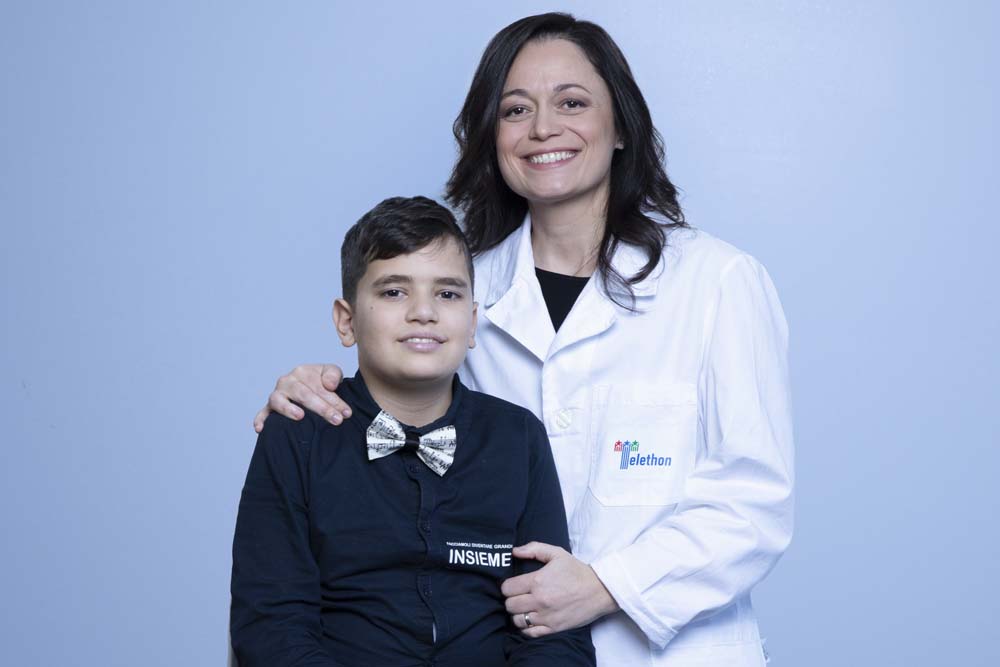This is the second gene therapy abandoned by industry that Fondazione Telethon is taking over, so that it reaches the patients who need it.

- Fondazione Telethon is the first no profit organization to take on the responsibility of commercializing gene therapies for rare diseases such as immunodeficiencies, in order to guarantee access to the patients.
- After the therapy for ADA-SCID, Fondazione Telethon is committed to ensuring that the therapy for Wiskott-Aldrich syndrome (WAS) is made available to patients, subject to authorization by the European Medicines Agency (EMA).
- Fondazione Telethon has been selected to participate with the gene therapy development programme for WAS in the pilot scheme to accelerate the development of advanced therapies promoted by the EMA.
On the eve of the 26th World Rare Disease Day, Fondazione Telethon announces its commitment to ensure that gene therapy for Wiskott-Aldrich syndrome (WAS), a rare genetic disease of the immune system, will be available in the next future.
This decision is the second step in an absolutely pioneering path charted by Telethon to prevent gene therapies, potentially able to change the natural history of very serious diseases, from being unavailable to the patients.
Last September, the Foundation had announced that it had taken on the responsibility of producing and distributing the gene therapy for another rare immunodeficiency, ADA-SCID, which, despite the confirmation of its efficacy and safety, was in danger of no longer being available.
A new challenge
Today it is the turn of the gene therapy for Wiskott-Aldrich syndrome, which also originated in the laboratories of the San Raffaele-Telethon Institute in Milan and was later the subject of an industrial partnership. However, in 2022, the pharmaceutical company that had licensed it announced its disinvestment in the immunodeficiency field, prior to applying for marketing authorization from the EMA.
Therefore, Fondazione Telethon obtained the return of the licence and embarked on a new challenge: obtaining approval of this therapy by the regulatory authorities. The commitment to make it available to the patients who need it fulfils the Foundation's mission to advance scientific research into the treatment of rare diseases, which affect as many as 300 million people worldwide.
"There is no better occasion than World Rare Disease Day to announce our commitment to make gene therapy for Wiskott-Aldrich syndrome available as a treatment."
Francesca Pasinelli, CEO of Fondazione Telethon
Meanwhile, the EMA has selected Telethon and that therapy development programme for its pilot scheme, whose aim is to guide non-commercial developers of promising ATMPs addressing unmet medical needs through the regulatory and scientific requirements in the European Union. The Foundation will be supported through a rigorous regulatory counselling and pre-authorization review process in the marketing application in Europe.
Francesca Pasinelli, CEO of Fondazione Telethon comments: “There is no better occasion than World Rare Disease Day to announce our commitment to make gene therapy for Wiskott-Aldrich syndrome available as a treatment. After the decision taken for the gene therapy for ADA-SCID, we want to ensure the availability of another treatment that would otherwise risk being denied market access. Being selected by the EMA for its European advanced therapy development programme is an acknowledgement of our ability to bring this therapy to approval in Europe, thanks to our vision and expertise”.
Wiskott-Aldrich syndrome (WAS)
It manifests itself from early childhood with recurrent and relapsing infections, bleeding, eczema, increased risk of developing autoimmune diseases and lymphomas.
The syndrome is transmitted in a manner linked to the X chromosome (on which the WAS gene is located): it almost exclusively affects males, with an incidence of 4/1,000,000 male live births, while females are generally healthy carriers. A healthy female carrier has a 50 per cent chance of transmitting the disease to each male child. The treatment of affected children consists of treating and preventing infection through regular infusion of immunoglobulins.
The only potentially decisive treatment is a haematopoietic stem cell transplant, which is, however, only feasible in the presence of a compatible donor and is not without potential complications, especially if performed after the age of 5.
Gene therapy
In cases where transplantation is not possible, gene therapy is proving to be a valid alternative, with excellent results in terms of both survival and efficacy.
It is based on a single administration of haematopoietic stem cells taken from the patient and placed in contact with a viral vector containing a healthy version of the gene associated with the syndrome. Once corrected, the stem cells are reinfused into the patient, who is 'prepared' to receive them thanks to a chemotherapy treatment that makes room in his marrow. The chemotherapy treatment is less intense - and therefore potentially less toxic - than that used in the case of donor transplantation.
The protocol devised by researchers at the San Raffaele-Telethon Institute in Milan involves the use of lentiviral vectors, i.e. those derived from the HIV virus: a remarkable paradox given that the dreaded human immunodeficiency virus is literally 'disassembled' and used as the basis for constructing the vehicle needed to treat an immunodeficiency that instead has a genetic origin.
To date, a total of 28 patients with WAS have been treated in Milan, more than half of those treated worldwide in other trials with lentiviral vectors. The results on the first patients treated indicate that gene therapy is able to restore proper immune system function, with a marked decrease in infections, an increase in platelets, and an improvement in typical manifestations such as eczema, petechiae, and bleeding.
They can discontinue prophylaxis and immunoglobulin intake, take vaccines, and above all live a community life (attending school, playing sports, working). All patients treated so far in the various phases of the trial continue to be monitored to collect further data on safety and efficacy.
At the moment, gene therapy is accessible in Italy thanks to the AIFA determination of 2 August 2023, which, pursuant to law 648, indicates it for the treatment of patients with WAS from 6 months onwards without a compatible donor.